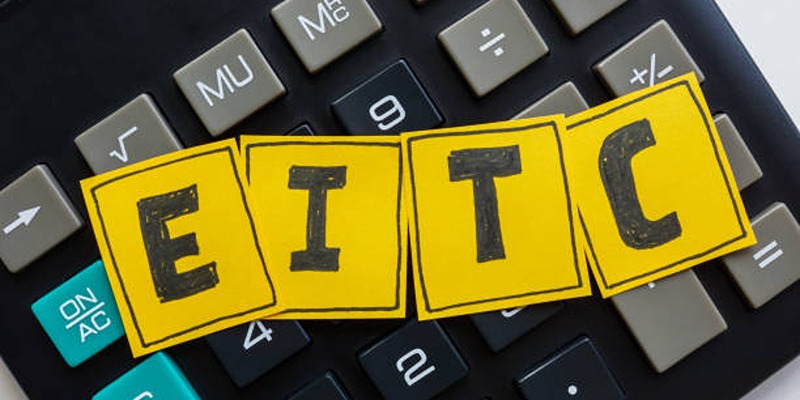Tax Responsibilities When Your Employer Skips Withholding: What You Need to Know
When an employer doesnt withhold payroll taxes, employees are often caught off guard and suddenly responsible for handling taxes that are typically taken out automatically. While this scenario isn't common, it does happen for various reasons, ranging from your job classification to employer oversight.

Knowing how to navigate this situation is essential for staying compliant, avoiding penalties, and ensuring you don't face a large tax bill at year's end. Here's a breakdown of what to do, why it matters, and how you can manage your tax responsibilities when no one is handling it for you.
Understanding Payroll Taxes and Why Withholding Matters?

Payroll taxes are specific tax obligations deducted from your paycheck. They cover federal income taxes, Social Security contributions, and Medicare. Typically, employers handle the calculations and withhold these amounts before issuing paychecks. For most employees, this system provides peace of mind, knowing that their contributions to federal taxes and other required payments are handled automatically. This withholding ensures taxes are paid steadily throughout the year, preventing a massive tax bill in April.
Why Withholding Is So Important?
Withholding taxes automatically helps taxpayers avoid the burden of estimating taxes themselves. By taking a portion of each paycheck, the IRS guarantees it receives a steady flow of funds throughout the year. When this doesn't happen, you're not only left to manage these deductions but also to monitor your tax liabilities regularly. This means keeping track of income, calculating taxes, and staying compliant with IRS requirements to avoid penalties.
Why Employers Might Not Withhold Taxes?
Not every job or situation requires payroll withholding. Here are some common reasons why you might end up in a situation where your employer doesnt handle tax withholding for you:
Classification as an Independent Contractor
If your employer classifies you as an independent contractor instead of an employee, payroll taxes typically won't be withheld. Instead of having taxes taken out automatically, independent contractors are considered self-employed and responsible for paying their taxes, which includes both income tax and self-employment taxes (covering Social Security and Medicare contributions).
Filing an Incorrect or Outdated W-4
Employees fill out a Form W-4 to indicate how much theyd like to have withheld from their wages for federal taxes. Errors on this form, or failing to update it after a major life event (such as marriage or a new dependent), can lead to insufficient withholding. Its important to periodically review and update your W-4 to make sure it reflects your current tax situation accurately.
Employer Error or Oversight
Occasionally, mistakes on the employers side can result in missing withholdings. Smaller companies, or those without a dedicated payroll department, may sometimes overlook or miscalculate withholdings due to administrative errors. If you notice that taxes arent being withheld, bring it up with your employer as soon as possible to confirm whether this is an intentional decision or an oversight.
Exempt Wages or Special Situations
Certain types of income or job situations may result in no withholding. For example, some short-term or seasonal employment roles sometimes follow different payroll tax practices. Additionally, some foreign workers and specific employment scenarios may be exempt from typical payroll withholdings. If you need clarification on whether your position falls into one of these categories, consult a tax professional.
How to Manage Your Tax Obligations Without Payroll Withholding?

The good news is that there are several strategies you can use to ensure youre setting aside enough to cover your taxes. Heres a guide to staying on top of your tax obligations:
Verify Your Employment Status
Understanding whether you're classified as an employee or an independent contractor is key, as this determines your exact tax responsibilities. If you need more clarification, review your contract or ask your employer directly. Being classified incorrectly can affect your tax obligations, so its crucial to get clarification early on.
Review and Adjust Your Form W-4
If your employer typically withholds taxes but still needs to do so, check your Form W-4 for accuracy. An outdated or incorrectly completed W-4 can be one of the reasons you need to see withholding on your paychecks. By making sure this form accurately reflects your financial situation, you can avoid surprises come tax time.
Calculate and Set Aside Estimated Taxes
Establish a system to regularly set aside a portion of each paycheck specifically for taxes. The IRS suggests using approximately 25-30% of each payment as a guideline, though this varies depending on your income and tax bracket. Automated savings tools can be helpful here, ensuring you dont accidentally spend the money meant for taxes.
Make Use of IRS Resources
The IRS website offers many tools to help taxpayers calculate their estimated tax payments. Use IRS Form 1040-ES, which includes a worksheet to guide you through assessing your income and taxes.
Consult a Tax Professional
For many, navigating taxes without payroll withholding can be overwhelming. Consulting with a tax advisor can help clarify your obligations, identify deductions you might be eligible for, and ensure compliance with all IRS requirements. A tax professional can also assist with quarterly payments and guide you in adjusting your tax strategy throughout the year. If ever in doubt, consult with a tax professional to ensure youre on the right track. With the right approach, you can navigate this situation smoothly and keep your finances in good shape, even when payroll withholding isnt part of the equation.
Conclusion
Managing taxes without employer withholding can seem daunting, but it's entirely manageable with some planning and diligence. Whether you're an independent contractor or dealing with oversight by your employer, the key is to take control early on. By understanding your obligations, making regular estimated payments, and keeping track of your finances, you can avoid the stress and penalties that come with unplanned tax bills.












